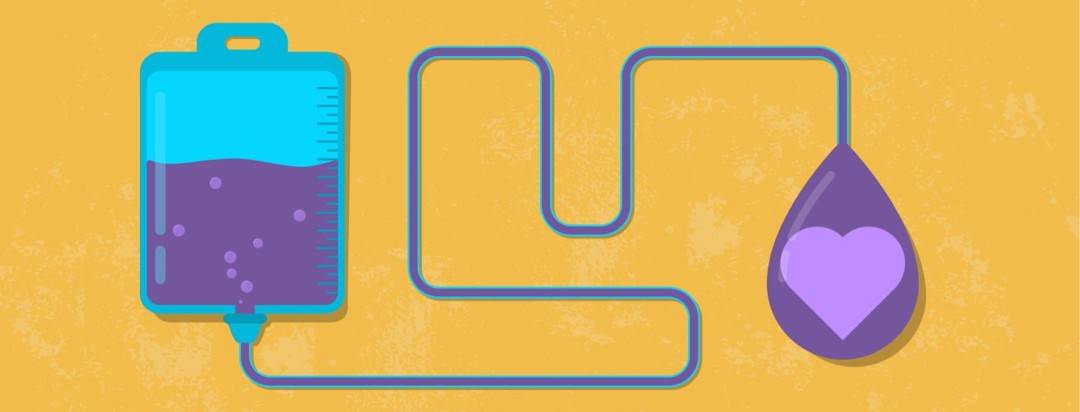Inside an Infusion
In the 20+ years since I’ve been diagnosed with multiple sclerosis, I’ve witnessed significant advancements in treating the disease. While we don’t yet have a cure, we have a wide assortment of options to help slow disease progression. These medications are administered in a variety of ways, including:
- Orally through pills
- Injected into the body via syringe
- Intravenously via infusions
The last one is what I wish to focus on today because I’ve realized, if you haven’t had an IV infusion, you may not know much about it. So, let me assuage your concerns about infusions by talking a bit about the experience.
IV meds for MS
Currently, I am on the medication called Tysabri and have been for the past 6 years or so. Personally, it’s been a life changer and has halted my disease progression (or at least slowed it significantly). Prior to starting it, I was headed towards being classified as having secondary-progressive MS, and Tysabri helped to stop that (and I firmly believe that if I’d been able to start a drug like Tysabri earlier in my treatment, that I wouldn’t be disabled today). For some, getting medication via IV can be a little frightening, which prevents them from experiencing the benefits these medications can offer. Hopefully, by going a little deeper into the process, it will seem a little less daunting.
My treatment routine
Once a month (some other drugs, like Ocrevus, are only prescribed every 6 months or more), I head on over to my local hospital for my Tysabri infusion. I’ve been going to this same place for close to 5 years at this point, so I’m not only comfortable with the staff, but many of the other patients who are being treated alongside me.
What happens once I'm in the chair
I sit down in a chair and have my vitals, like blood pressure and temperature, taken while I answer some basic questions about how I’ve been since my last infusion. I then have an IV placed in my arm. I understand this can be upsetting for some, but it really is just a quick pinch type feeling, just like getting an injection. Typically, the nurses administering these medications do this all day, every day. They’re very experienced at putting IVs in, though obviously some experiences will vary!

Devin during a Tysabri infusion.
How I pass the time during an infusion
With my IV in place, I then have a bag of my medication attached to it and hooked to a pump. The medication then slowly enters my body over the course of an hour. During this time, I barely notice it at all. I typically spend the hour reading, looking at my phone, or talking to others that are in the room with me (if there are any). Sometimes, my roommate or other friends will accompany me and sit next to me and we’ll catch up. Depending on how you decide to pass the time, that hour can seem incredibly fast or painfully slow. So, planning ahead with some sort of activity is encouraged. When the hour is over, the IV is removed, a small, temporary bandage is put in place where the IV was, and then I’m sent on my way! So you can see, there really isn’t too much to it at all.
I no longer have to wait after my infusion
While it’s only an hour for me now, when I started, I had to remain in the hospital room for an hour after my infusion so I could be observed to make sure I didn’t have any allergic or adverse reactions. I’ve been on it long enough now though that that is no longer a concern. So, when that hour is up, I’m done. I know some folks that have to take Benadryl before their Tysabri, which adds a little more time to their infusion (as it is also administered intravenously). That may add some time but it also makes for a nice nap while getting your infusion. Experiences vary when your infusion is finished; some people head back to work or go about their everyday lives. I tend to get a little tired after mine and head home for a nice nap.
For me, getting an IV infusion isn't so bad
While the frequency and duration of each IV medication may vary, the basic process of getting an IV and waiting for the medication to get into you is very similar. I hope I’ve shown that it really isn’t all that scary or intense. Other than waiting around, it isn’t much different than getting an injection. While there are many considerations when it comes to choosing a treatment for multiple sclerosis, the way it is administered should be one of the least worrisome. Hopefully, by discussing the actual process, it will seem a little less daunting to those that are thinking about making the jump to an IV infusion.
Thanks so much for reading and always feel free to share!
Devin
My Other Articles On MultipleSclerosis.net - Follow Me On Facebook

Join the conversation